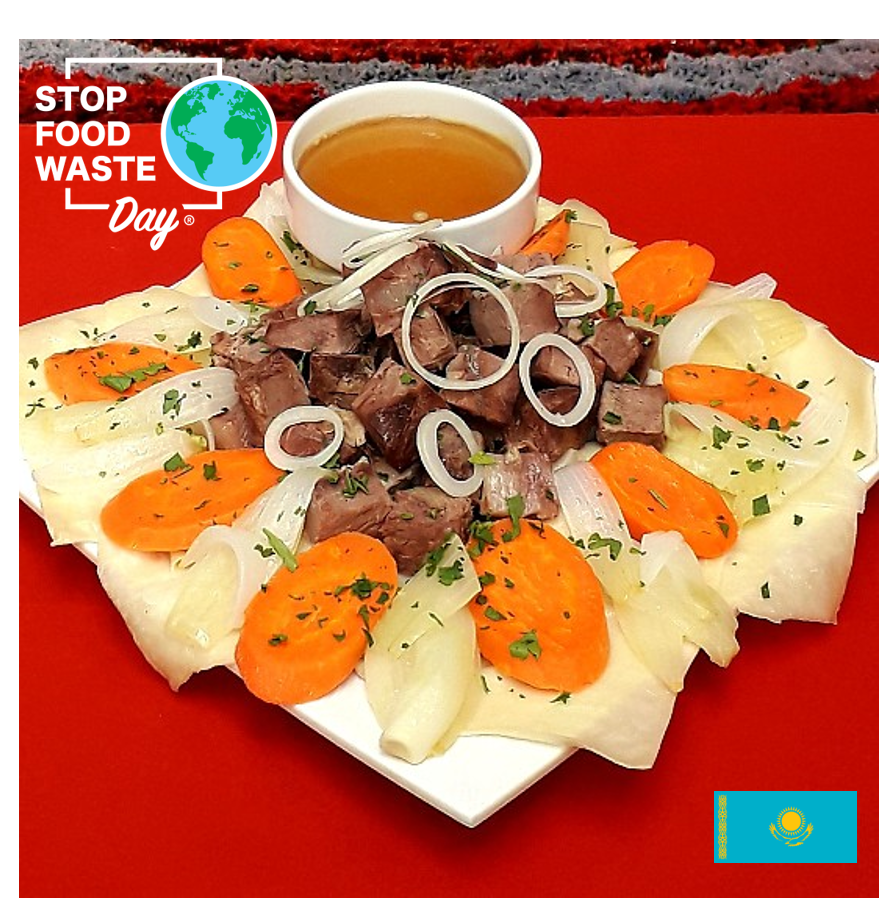Beef Beshbarmak

INGREDIENTS
10 ml cumin seeds
5 ml crushed black pepper corns
15 ml table salt
2 bay leaves
1.3 kg lean boneless beef chuck
2.5 litres water
375 g white flour
3 eggs
30 g fresh parsley
1 large onion
2 large carrots
- 4-6
- A bit of effort
Catering Head Chef Hajime Tai works for Compass Group in Japan. He told us this, about his recipe for Quinoa Oyaki.
"Many areas of Nagano prefecture in Japan are not suitable for rice cultivation due to the steep terrain and cold climate. Therefore, foods made from wheat or buckwheat instead of rice have been eaten for a long time. Oyaki is one of them, and the fillings are wrapped in a dough made by kneading wheat flour or buckwheat flour. Originating in the cold regions of Nagano prefecture, the Hokushin region and the Azumino region, it was handed down to each household as a substitute for rice in the winter, and it was customary to make it as an offering in front of Buddha on August 14th every year during Obon.
This time, I made a recipe for Oyaki with Kenchin-style vegetable fillings that uses up vegetable scraps (you can adapt and use whatever you have available in your fridge) and a dough that uses the superfood Quinoa. This can be offered to vegans and vegetarians, too."
METHOD
- In a medium size pot place the meat, pour in 2,5lt of water, add the black pepper, cumin seeds, salt, bay leaf, the outer leafy brown skin of the onion after it has been peeled (adds flavour and colour to your stock) and the stalks of your parsley (reserve the fronds for garnish and taste). Turn on the heat and bring the water to a slight boil.
- Once the foam starts forming a scum, use a skimmer and remove the foam. Turn the heat down to a simmer, cover the pot and simmer until the meat is completely cooked and tender. This may take up to 2 hours
- While the beef cooks, slice the large onion in half, then cut the one half into quarters, and cut your second half into rings and keep these to one side. Wash the carrots well but do not peel. Cut the carrots into 1cm slices on the bias.
- During the last 45 min of cooking the beef, add the onions and carrots in to the broth.
- Once the meat is tender, remove with a slotted spoon and keep warm.
- Strain your broth through a Chinois sieve, to achieve a clear broth, retain the carrots and peeled onion. (The aromatics can be added to the compost heap)
- Take 2L of your broth, transfer it to a clean pot, bring it to a boil, the remaining broth keep warm in a separate pot on the stove.
To make your pasta sheets:
- Place your flour in a large bowl
- Make a well in the centre of the flour and break your eggs into the well. With your hands, work the eggs into the flour, mixing until all the flour has been incorporated into the eggs. Turn out onto a lightly floured surface and knead until you have a smooth glossy dough. (About 6 minutes)
- Cover the dough with plastic wrap or damp cloth and let it rest for about half an hour.
- Divide the dough into four equal parts and roll out each section until very thin, cover the sections you are not working with a damp cloth to prevent them from drying out.
- Cut each section into 5x5cm squares and keep covered with a damp cloth until you have cut all your dough into squares.
- Once your broth comes to a rolling boil, add your pasta sheets.
- While your pasta is cooking, cut your cooked meat into 2cm cubes and keep one side.
- When your pasta is cooked (About 3- 4 minutes), remove with a slotted spoon and arrange on a platter, place your cooked cubed meat in the centre of the platter and spoon some of your broth over the dish to keep it moist, arrange your cooked carrot and onions over the top of the meat and pasta. Garnish with the chopped parsley fronds.
- Serve the remainder of your strained broth in a separate soup bowl to complement your Beef Beshbarmak.





